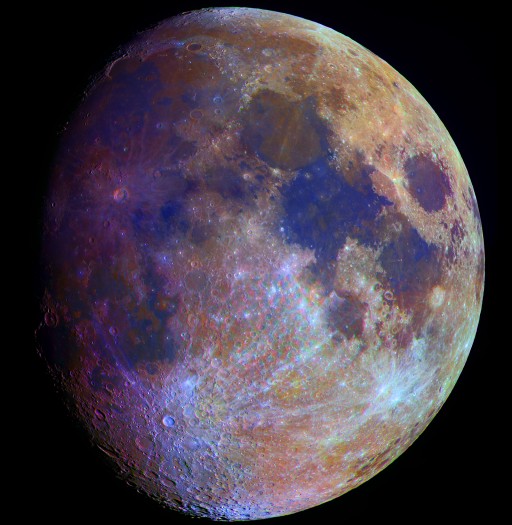
|
Credit & Copyright: Johannes Schedler
(Panther Observatory)
Explanation:
Earth's Moon
is normally seen in subtle shades of grey or yellow.
But small color differences
have been greatly exaggerated
to make this dramatic mosaic image of
the Moon's gibbous phase.
The familiar Sea of Tranquility
(Mare Tranquillitatis) is the blue area right
of center.
White lines radiate
from the crater Tycho at bottom left,
while purplish tones mottle the crater
Copernicus left of center.
Though exaggerated, the different colors are recognized to
correspond to real differences in
the chemical makeup of the lunar surface - blue
hues reveal
titanium rich
areas while orange and purple colors
show regions relatively poor in titanium and iron.
Calibrated by
rock samples
from the Apollo missions, similar multicolor
images from spacecraft
have been used to explore
the Moon's
global surface composition.
|
January February March April May June July August September October November December |
| ||||||||||||||||||||||||||||||||||||||||||||||||
NASA Web Site Statements, Warnings, and Disclaimers
NASA Official: Jay Norris. Specific rights apply.
A service of: LHEA at NASA / GSFC
& Michigan Tech. U.
Based on Astronomy Picture
Of the Day
Publications with keywords: Moon - color
Publications with words: Moon - color
See also:
- APOD: 2025 August 23 Á Fishing for the Moon
- APOD: 2025 July 20 Á Lunar Nearside
- APOD: 2025 June 28 Á Lunar Farside
- APOD: 2025 June 20 Á Major Lunar Standstill 2024 2025
- APOD: 2025 June 18 Á Space Station Silhouette on the Moon
- APOD: 2025 April 22 Á Terminator Moon: A Moonscape of Shadows
- Moon Near the Edge
